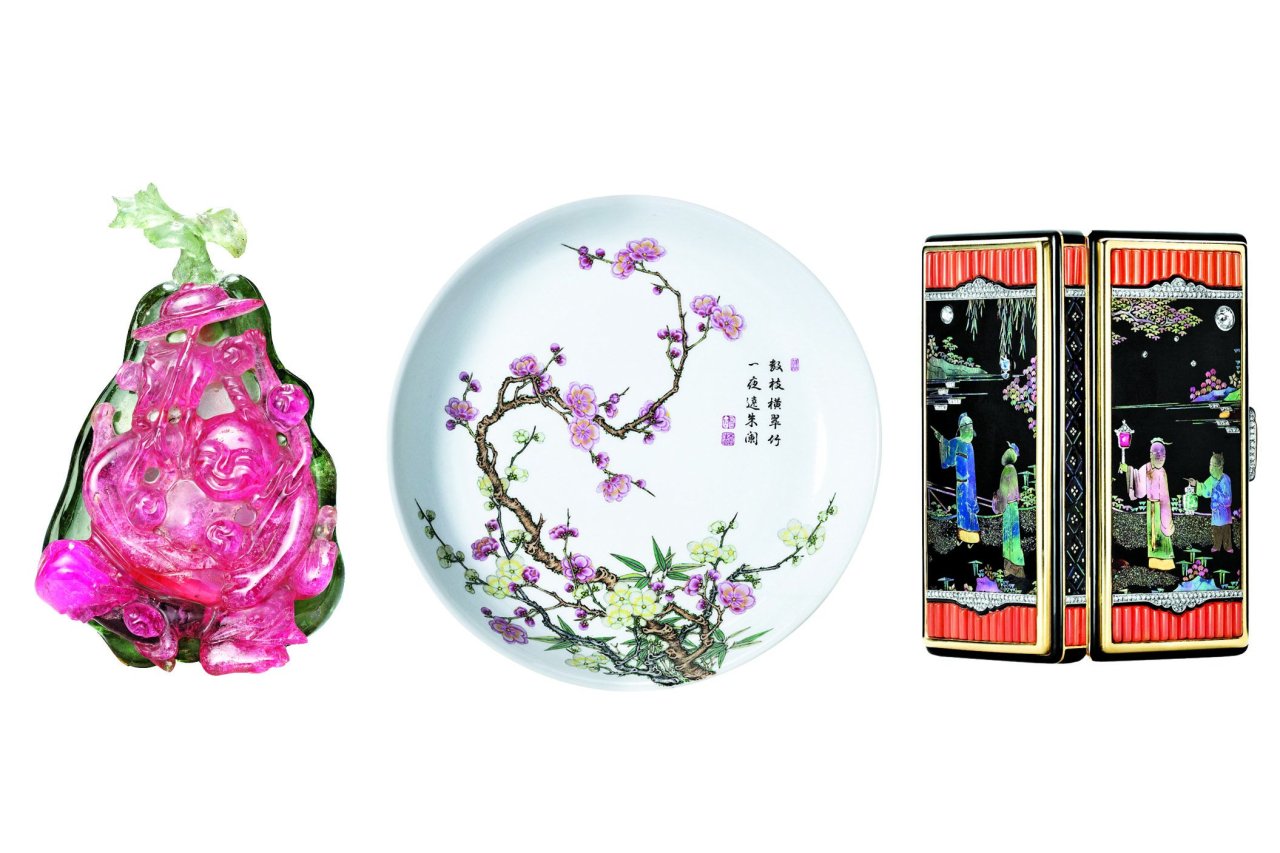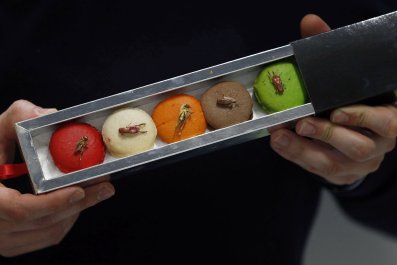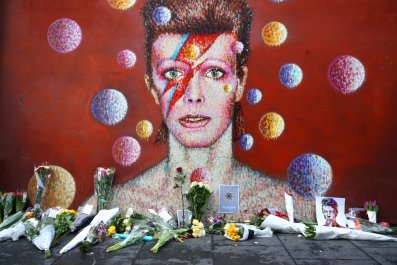On a recent trip to Switzerland, I had the opportunity to visit an enchanting exhibit called "Asia Imagined" at the Baur Foundation, a private museum in Geneva. Located in one of the spacious belle époque villas that crown the hill of the old town, the Baur is a museum of Far Eastern art and objects collected by Alfred Baur (1865-1951), a Swiss fertilizer magnate turned aesthete.
Baur's fascination with art from the Far East stemmed from his travels in Asia in the 1880s (he was posted to Colombo, Sri Lanka, in 1884). After a long voyage to India, China, Korea and Japan in the 1920s, he began to focus on collecting pieces of exquisite quality. Although I do not know enough about jade to comment, I am told that his collection of more than 130 carved jade pieces is dazzling enough to bring on an attack of Stendhal syndrome among visiting Chinese lovers of the green-colored stone. It is a collection that rewards inspection—even for the uninitiated.
For the "Asia Imagined" exhibit, which runs from November 12 until February 14, the Baur Foundation teamed up with French luxury house Maison Cartier to show the influence of the Far East on the Cartier Collection over the course of more than a century. Parisian jeweler Alfred Cartier (1841-1925) was a contemporary of Baur, and the exhibition features more than 160 Cartier creations, exploring how the 19th- and 20th-century fashion of collecting "curios" from the Far East had a powerful impact on collectors and creators in Europe at the time.
In 1928, Baur began to develop an interest in Chinese ceramics, becoming increasingly fascinated by this field and eventually forming a collection that spanned over a thousand years of Chinese history, from the Tang to the Qing dynasty. In Paris that same year, Alfred Cartier's son Louis used a late 17th- or early 18th-century Chinese famille verte plate as the model for a vanity case.
"Asia Imagined" brings together the inspired chinoiserie of Cartier with the treasures of the Baur Foundation to create an exhibition with enough curatorial kick to satisfy the academic visitor and more than enough dazzle to keep the mere student of beauty—like me—fully engaged. The lighting has the effect of making these sometimes peacock-bright objects emerge from the stygian gloom of the basement rooms, presenting already-glamorous objects with an additional theatrical flair. The large dragon screen clock appears to float in the darkness, its intricately carved white jade dial almost luminous and the diamond hour markers shimmering. It is one of the stars of the show; bigger, I am told, than the one in the Musée des Arts Décoratifs in Paris.

"Asia Imagined" disabuses visitors of the notion that Cartier was creating pastiches of Chinese art. The curator has placed Cartier items in vitrines alongside the Far Eastern originals, and there were occasions when I had to study the information cards to determine which was which. One vitrine shows two jade paper knives: Upon closer inspection, one turns out to be a Qing dynasty hairpin made from jadeite, a rarer, more valuable form of jade; the other is a white jade paper knife carved with a floral motif and scattered with a handful of ruby cabochons.
Side by side, two carved pendants—one in green jade, the other in tourmaline—share an aesthetic sensibility. Only the addition of a platinum mount, a few diamonds and ruby cabochons betray the jade pendant as a product of Cartier's workshops. (The other was made in China during the 18th or 19th century.)
Nevertheless, the exhibit is much more than a sophisticated "spot the difference" competition; it is a serious, as well as enjoyable, study of Asia's influence on the European decorative arts.
Of course, there are some treasures that are indisputably Cartier. There is no mistaking Daisy Fellowes's Hindu or Tutti Frutti necklace, nor the similarly ebulliently colored bracelet and brooches that once belonged to Cole Porter's wife, Linda Lee Thomas. These are world-class jewels that rank as masterpieces, artworks that in their own way occupy the position of a Van Gogh or Picasso.
The Baur Foundation show is not nearly as magisterial as the recent exhibition at the Grand Palais in Paris; instead, it is an exercise in curatorial focus. The exhibit illustrates obliquely just how rich and well-researched the Cartier Collection has become under the direction of curator Pascale Lepeu. The idea of jewelers buying back important pieces for their archives is a relatively recent phenomenon, but Cartier started early, with a clock bought in a 1973 auction. Now the collection numbers over 1,500 pieces, ranging from discreet cufflinks to Jean Cocteau's spectacular allegorical sword, commissioned from Cartier when he joined the Académie Française. Each piece tells its own story.
This little jewel of a show in Geneva offers the chance to appreciate a small but beautiful fraction of these items in new way.





















